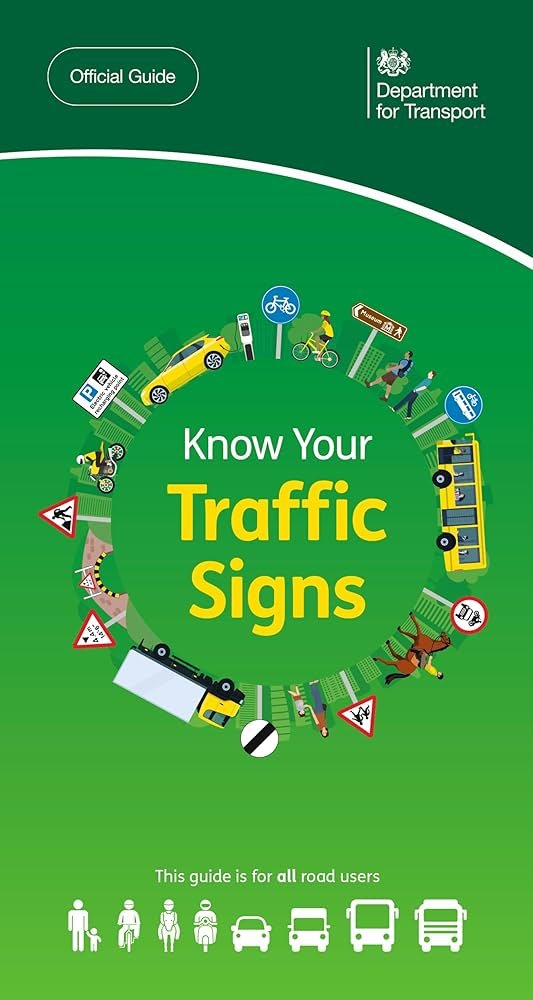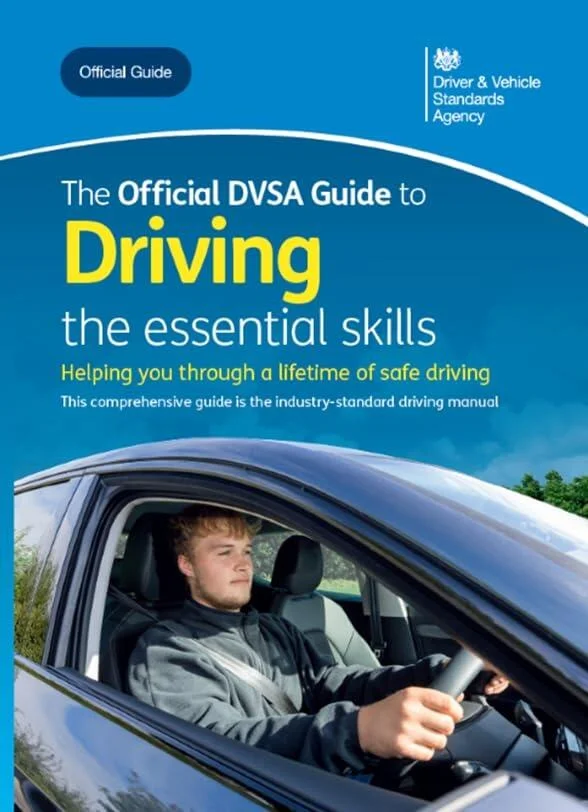Learning Hub
Provisional Licence
Apply for your first provisional licence online. You need to be at least 15 years and 9 months old but you can’t start learning to drive until you’re 17.
Reading Resources

The Highway Code
The rules and regulations about using the roads by all road users. your first stop guide to the Theory Test

Know Your Traffic Signs
Everything your need to know about traffic signs and road markings on UK roads.

Driving: The Essential Skills
Your book to learn the knowledge and understanding about driving.

Frequently Asked Questions
You need to be 17 years old before you can take lessons on a public road with a qualified instructor unless you are receiving a disability living allowance or PIP. In this case you can start learning in an an adapted vehicle from 16 years old.
How long is a piece of string? There’s no required minimum in terms of lessons or hours. On average it usually takes anywhere from 45 hours upwards. It depends on many things like, how much practice, how often, ability to learn new skills, commitment, finance… the list goes on but you get the point, it’s very unique to each individual.
No you don’t but you can’t book your practical test until you’ve passed your theory so it’s advisable that you start early, perhaps even before you even take your first lesson. You can take your theory test on your 17th birthday for example.
- Theory test £23
- practical driving test £62
- It’s not compulsory to learn with an instructor. You can learn in your own car with friends or family as long as you have the correct learner driver insurance and that the person who sits in with you meets the legal requirements.
- If learning with an instructor then you’d use that car. Note that you still pay the instructor for their time as well as the DVSA’s £62 test fee. The car you use does not have to be dual controlled so as long as the car meets the DVSA’s legal requirements for cars that can be used on test.
Your instructor will normally pick you up at an agreed location before checking your eyesight and your provisional driving licence. Expect for your instructor to drive to a quiet area to eliminate busy traffic before asking if you’re ready to swap over and take the drivers seat.
Expect to cover how to set the car up properly for driving (cockpit drill), the cars hand and foot controls, practice clutch control, some gear changes and maybe some junctions if you’re really good!
You can download and use the driver’s record for learner drivers from gov.uk to give you an idea of the driving syllabus. This will help you to know what you haven’t yet covered. A good instructor usually means good communication, involving learners in regular conversations about their eventual test.
Someone learning to drive should be able to deal and cope with challenging driving situations and scenarios independently before taking a test. The test will look for a minimum stand of driving for 40 minutes with no serious or dangerous faults. It is not looking for a perfect driver.
Sometimes a mock driving test is carried out by instructors to establish whether a learner should sit a test or not.
It’s crucial you take the test only when you know you are going to pass. Otherwise it’ll be a very expensive day out. You’ll have to book another test and pay £62 again. You have to choose a date at least 10 working days away.
The Theory Test
The Theory Test
You need to pass a theory test before you can take your driving test.
The theory test is an assessment of your understanding of the rules of the road. It consists of 50 multiple choice questions and 14 hazard perception videos. You must pass both parts to be successful.
The current pass rate is staggering low at 46% (Feb 2024 – www.gov.uk data)
Plan & Organise
Create a study schedule or timetable to allocate specific time slots for each subject or topic you need to revise. This helps you stay focused and ensures you cover everything you need to.
Break it down
Divide your revision into smaller, manageable chunks. This makes it easier to digest the information and prevents overwhelm. Focus on one topic or subtopic at a time before moving on to the next.
Use active learning techniques
Avoid passive ready or simply highlighting texts. Practise with your instructor or when you are in the passenger seat. Take advantage of every opportunity to learn. These techniques enhance understanding and retention.
Practise tests
Know beforehand what to expect with the test format and types of questions by taking mock tests in an app or online. This helps you become comfortable with the style of questions and identify weakness in your hazard perception skills.
Find a suitable study environment
Choose a quiet and well-lit space where you can concentrate without distractions. Make sure you have all the necessary resources readily available.
Take regular breaks
Studying for long periods without breaks can lead to fatigue and reduced productivity. Take short breaks every 45-60 minutes to rest and recharge. Use this time to stretch, have a healthy snack or do something enjoyable.
Get enough sleep
Prioritise getting sufficient sleep, especially the night before the test. Sleep helps consolidate your learning and improves cognitive functioning - very important for the hazard perception test.
Stay Organised
Keep your study materials, notes, and resources orderly and kept somewhere safe. Use folders, binders, or digital tools to manage your documents and keep track of important information. This saves time and reduces stress when you need to find something specific.
